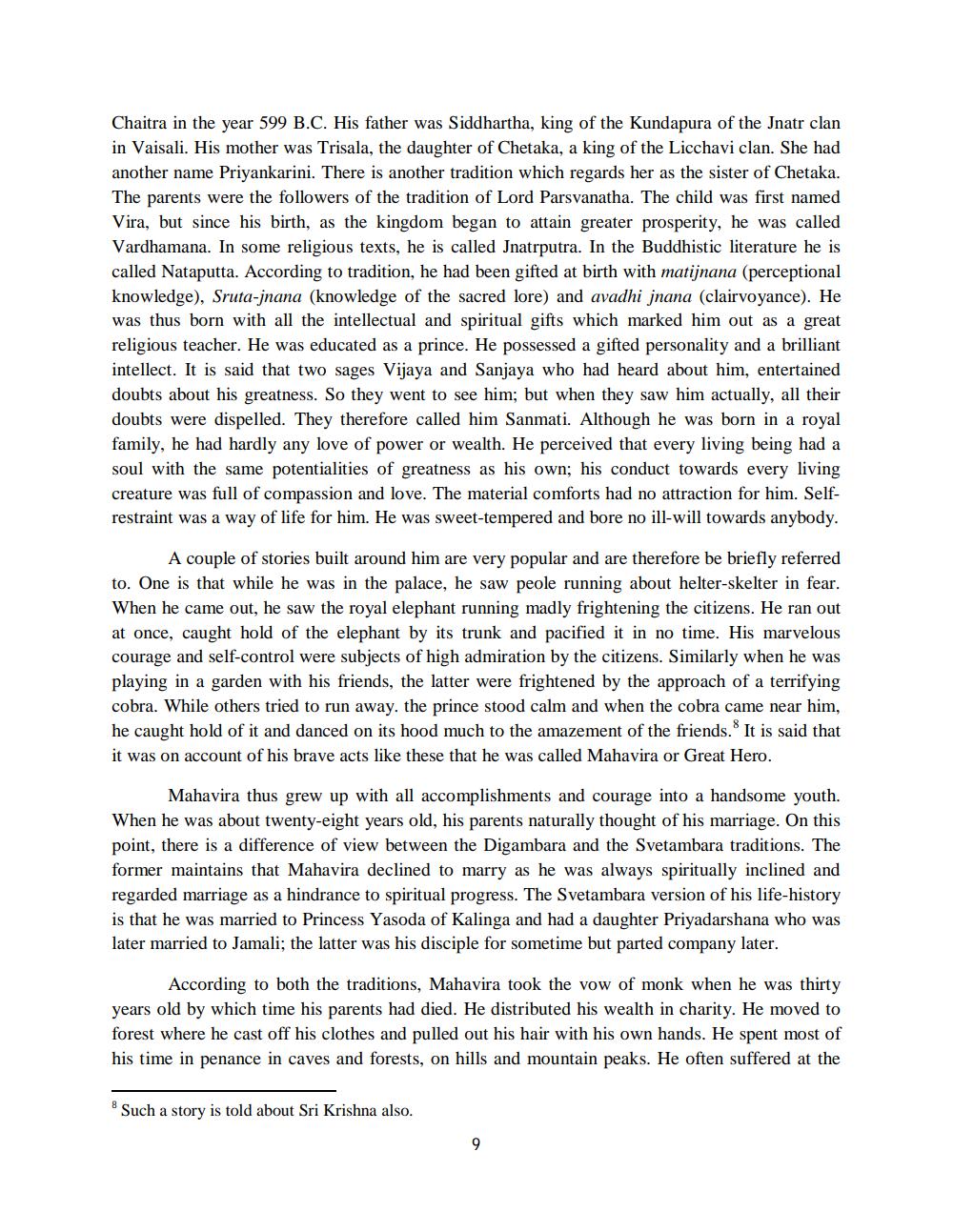Book Title: Basic Principles Of Jainism Author(s): Narayan Lal Kachhara Publisher: Narayan Lal Kachhara View full book textPage 9
________________ Chaitra in the year 599 B.C. His father was Siddhartha, king of the Kundapura of the Jnatr clan in Vaisali. His mother was Trisala, the daughter of Chetaka, a king of the Licchavi clan. She had another name Priyankarini. There is another tradition which regards her as the sister of Chetaka. The parents were the followers of the tradition of Lord Parsvanatha. The child was first named Vira, but since his birth, as the kingdom began to attain greater prosperity, he was called Vardhamana. In some religious texts, he is called Jnatrputra. In the Buddhistic literature he is called Nataputta. According to tradition, he had been gifted at birth with matijnana (perceptional knowledge), Sruta-jnana (knowledge of the sacred lore) and avadhi jnana (clairvoyance). He was thus born with all the intellectual and spiritual gifts which marked him out as a great religious teacher. He was educated as a prince. He possessed a gifted personality and a brilliant intellect. It is said that two sages Vijaya and Sanjaya who had heard about him, entertained doubts about his greatness. So they went to see him; but when they saw him actually, all their doubts were dispelled. They therefore called him Sanmati. Although he was born in a royal family, he had hardly any love of power or wealth. He perceived that every living being had a soul with the same potentialities of greatness as his own; his conduct towards every living creature was full of compassion and love. The material comforts had no attraction for him. Selfrestraint was a way of life for him. He was sweet-tempered and bore no ill-will towards anybody. A couple of stories built around him are very popular and are therefore be briefly referred to. One is that while he was in the palace, he saw peole running about helter-skelter in fear. When he came out, he saw the royal elephant running madly frightening the citizens. He ran out at once, caught hold of the elephant by its trunk and pacified it in no time. His marvelous courage and self-control were subjects of high admiration by the citizens. Similarly when he was playing in a garden with his friends, the latter were frightened by the approach of a terrifying cobra. While others tried to run away. the prince stood calm and when the cobra came near him, he caught hold of it and danced on its hood much to the amazement of the friends. It is said that it was on account of his brave acts like these that he was called Mahavira or Great Hero. Mahavira thus grew up with all accomplishments and courage into a handsome youth. When he was about twenty-eight years old, his parents naturally thought of his marriage. On this point, there is a difference of view between the Digambara and the Svetambara traditions. The former maintains that Mahavira declined to marry as he was always spiritually inclined and regarded marriage as a hindrance to spiritual progress. The Svetambara version of his life-history is that he was married to Princess Yasoda of Kalinga and had a daughter Priyadarshana who was later married to Jamali; the latter was his disciple for sometime but parted company later. According to both the traditions, Mahavira took the vow of monk when he was thirty years old by which time his parents had died. He distributed his wealth in charity. He moved to forest where he cast off his clothes and pulled out his hair with his own hands. He spent most of his time in penance in caves and forests, on hills and mountain peaks. He often suffered at the Such a story is told about Sri Krishna also. 9Page Navigation
1 ... 7 8 9 10 11 12 13 14 15 16 17 18 19 20 21 22 23 24 25 26 27 28 29 30 31 32 33 34 35 36 37 38 39 40 41 42 43 44 45 46 47 48 49 50 51 52 53 54 55 56 57 58 59 60 61 62 63 64 65 66 67 68 69 70 71 72 73 74 75 76 77 78 79 80 81 82 83 84 85 86 87 88 89 90 91 92 ... 106
